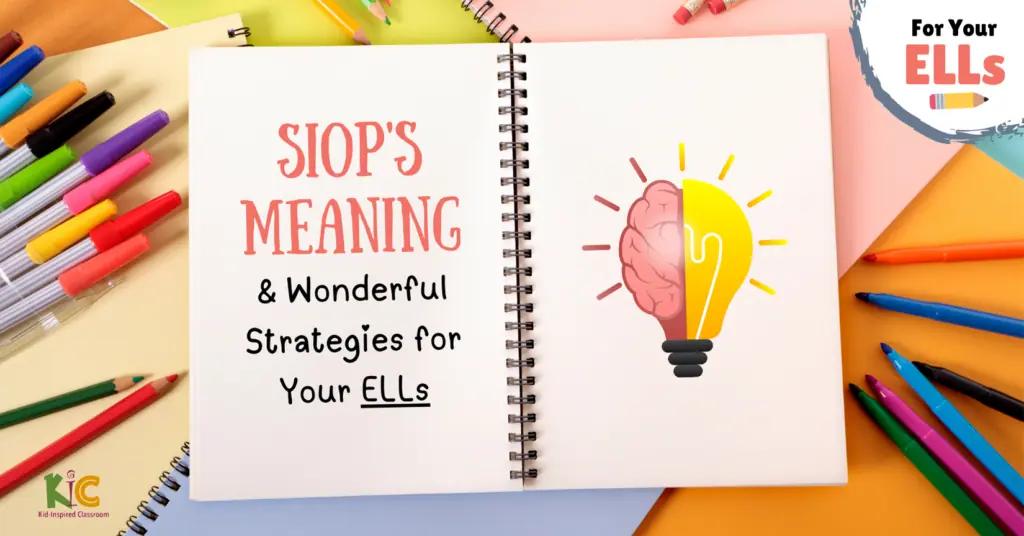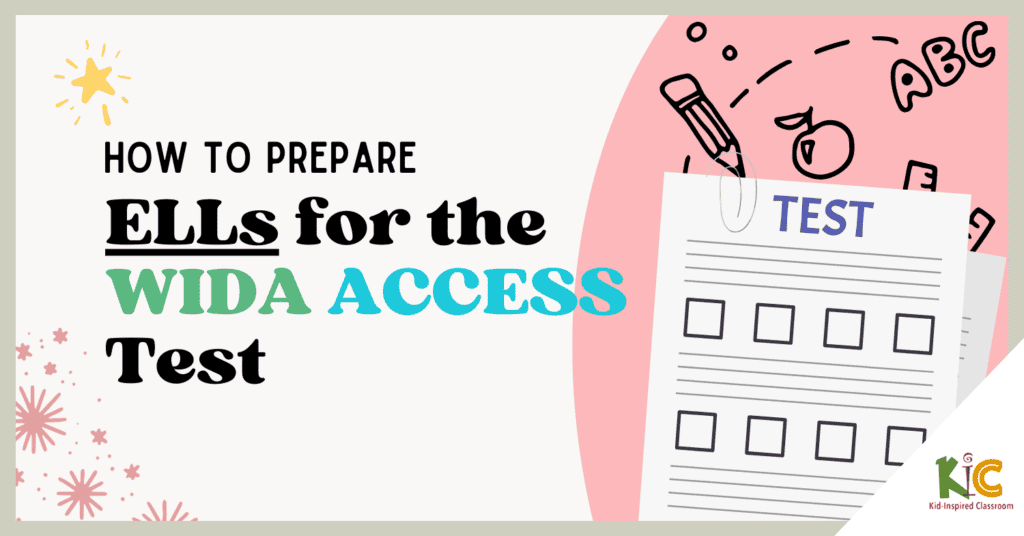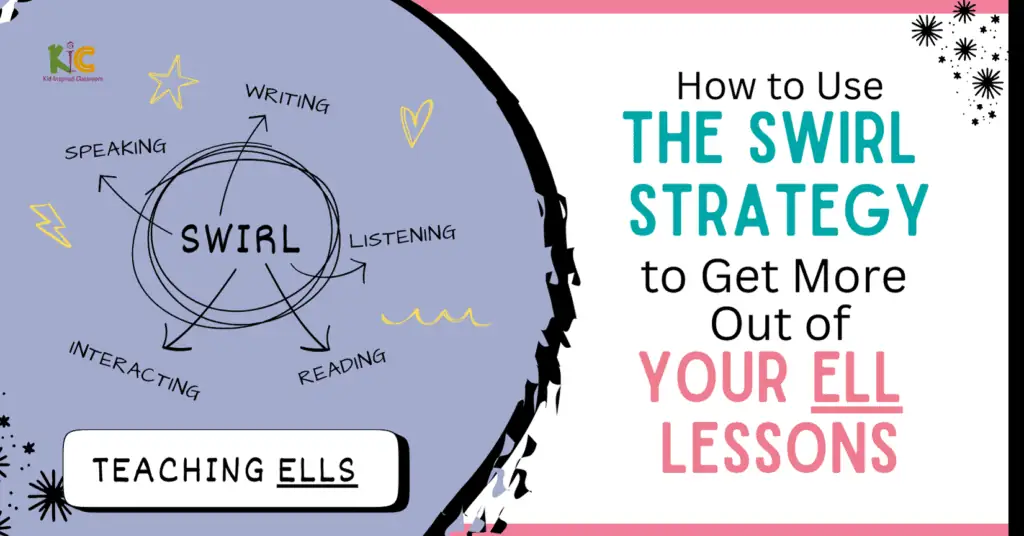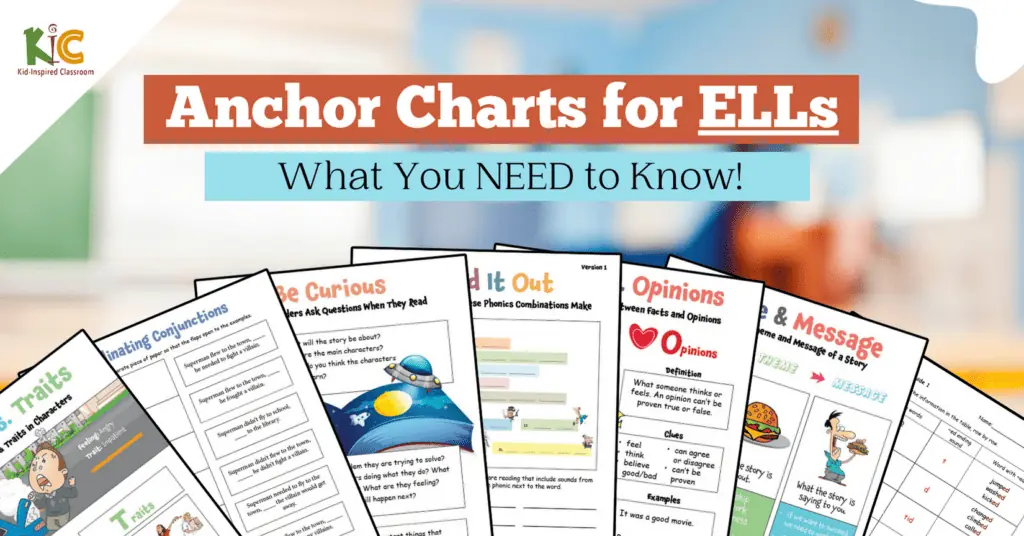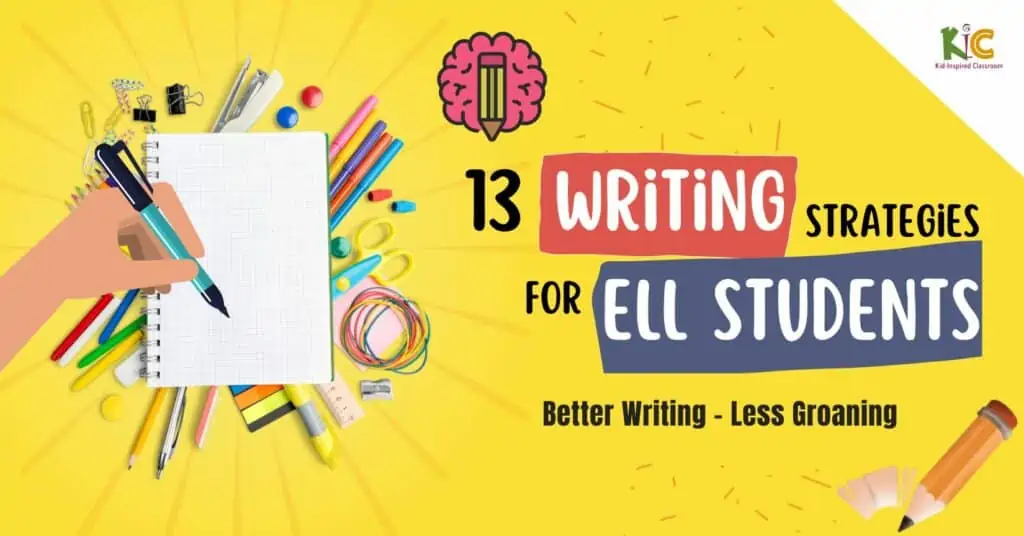
If your students groan every time you mention writing, and you find yourself groaning every time you try to plan a lesson on writing, this article is for you!
You’ll find 13 (+ a bonus one!) different writing strategies for ELL students below along with a ton of tips on how to get your MLLs’ writing skills up to snuff AQAP (As Quick As Possible – I just made that up).
This could make a huge difference in the impact you have on your English learner’s experience at your school. You can also download a copy of this list below!
So let’s dive right in.
Writing for ELL Students Is Hard
Writing requires students to bring together a lot of knowledge and skills:
- Ideas – Coming up with ideas to write about
- Vocabulary – Knowing the words needed to communicate their ideas
- Spelling – Knowing how to spell the words they want to use
- Grammar – Knowing how to put together the words they want to use into meaningful and correct sentences
- Flow & Structure – Knowing how to put together sentences into a logical and structured format in order to communicate clearly and effectively
If you jump from telling students about a topic to asking them write about it, you are very likely going to end up with extremely poor results. Many of your students will be frustrated, lose motivation, and check out. You will have a much harder time getting them to write in the future.
Sweating Just the Big Stuff with Our ELLs’ Writing
Let’s be honest, even native speakers—shoot, even adult native speakers—can struggle enormously with writing.
We need to allow a lot of leeway for our English learners as they push themselves to improve in writing. Very often this means we need to let go of a few things that may break their confidence and motivation right out of the gate.
At first, you will likely want to let one or more of the following things go in order to focus on what matters most:
- Spelling
- Grammar
- punctuation
I know it can cause some teachers a certain amount of distress to see a misspelled word or an incorrectly structured sentence and not correct it, but keep in mind that you will be able to in the future once the student has reached a place where those things are more manageable for them.
Let students focus on the content of what they want to say. Help them get it out on paper in any shape or form. Then afterward, you can choose one of the above areas to start correcting if time and student confidence allow.
Writing Strategies for ELL Students – My recommended Priorities
Here is how I would prioritize the writing objectives in class with my English learners.
- Communicating ideas with appropriate vocabulary comes before correct grammar.
- Correct grammar and sentence structure comes before punctuation. (It’s nearly impossible to figure out where punctuation should go if their sentences are a hodgepodge of grammatically-incoherent words.)
- Good punctuation comes before spelling. (I don’t know if I’m in the minority, but spelling doesn’t usually rate high on my list of priorities. Those students who spell well, always spell well. Those students who don’t, don’t usually make meaningful gains if time and attention is limited.)
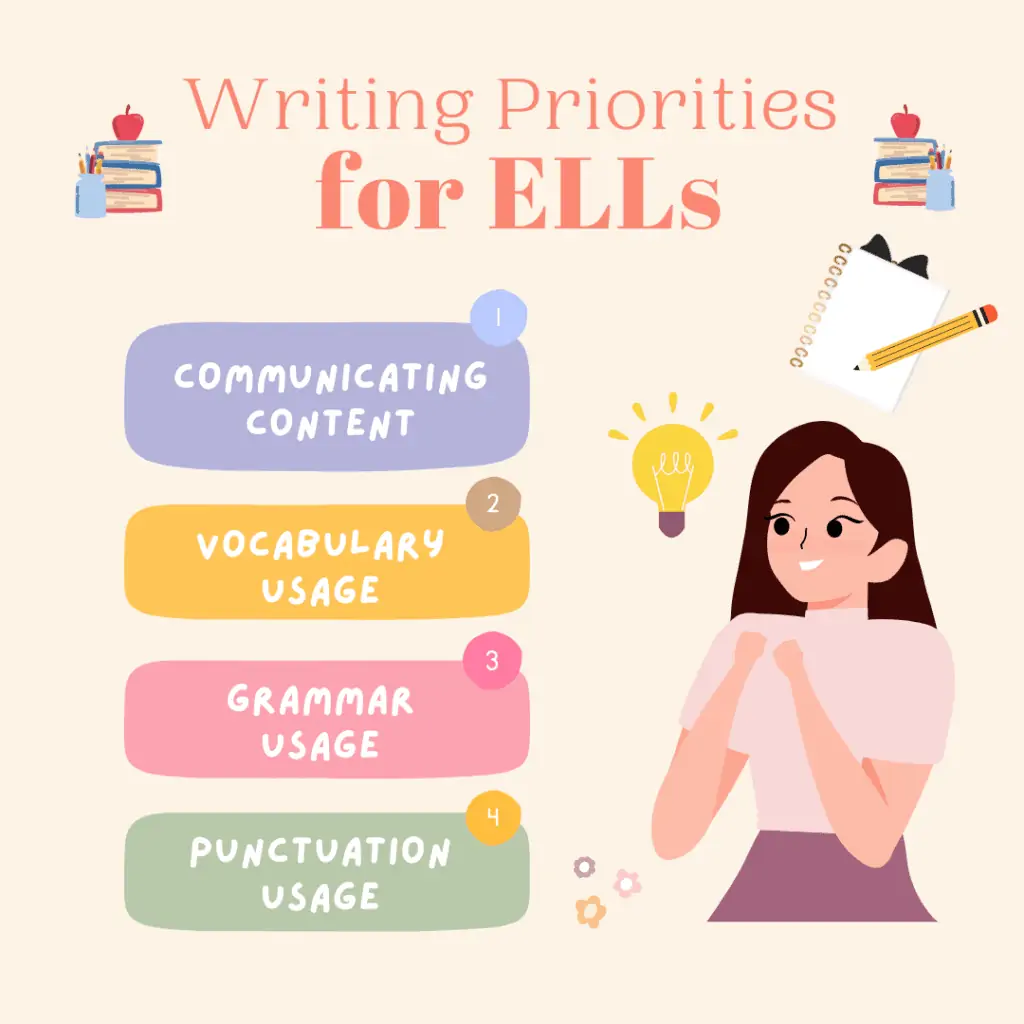
Again…
Writing is hard.
I struggled with it well into completing my Masters degree. (I have emojis turned off on this site, so you’ll have to imagine an embarrassed emoji here.)
A Basic ELL Writing Lesson Outline
You’ll have a much better experience if you keep the following rubric in mind:
- Start with Speaking – Practice with lots of speaking the vocabulary, sentence structures, and ideas students will need to complete a writing assignment. As has been said before, and most recently I saw Valentina Gonzalez mention it, students cannot write what they cannot say. It is best to find an opportunity to check in with students to make sure they have actually understood and remembered the content otherwise it can be easy for some students to slip by without actually having learned it and then they struggle enormously when it comes time to write.
- Follow with Reading – Provide students with targeted reading practice similar to what you would like them to write. It can be on the same topic or it can be an example of the type of writing you’d like them to complete.
- Finish with Writing – After students have shown some mastery of the content in speaking and reading, they can then move on to the writing stage.

This is why all of the units in the Kid-Inspired ESL Curriculum follow this sequence. The writing assignments follow the vocabulary, speaking/listening, and reading.
This is also Bloom’s Taxonomy. Basically you have to have some grasp of knowledge before you can begin to grapple with it and you have to grapple with knowledge before you can create something of your own about it.
13 Wonderful Writing Strategies for ELL Students
Alright, here they are! The writing strategies for ell students I promised you. Check them out and let me know what you think. Have you used them before? How did it go? What other activities do you recommend?
R.A.C.E.S.
R.A.C.E.S. stands for Restate, Answer, Cite, Explain, Summarize. It is a wonderful way for students to remember how to structure a good response to a question. You can read a detailed overview of how to use this strategy at the link below.
R.A.C.E.S. – An Excellent Academic Writing Framework for ELLs
Language Experience Approach
The language experience approach is a term for something really quite simple: getting students to write about something with which they have some experience. This can be something they have done in the past or it can be something you do together inside or outside of class that you can then write about. The idea is that students have a much easier time writing about something they’ve had hands-on experience with. I highly recommend getting students to speak about the experience orally first before committing anything to writing. It can also be very helpful to do an example together as a class with students contributing ideas so that they can get an idea of the kinds of sentence structures and paragraph or essay structure you’re looking for them to use.
Sentence Auction
This is a really fun activity I learned from Colorin Colorado for helping students pay attention to grammatically correct sentences. You create a number of sentences beforehand about a particular topic the students will be writing about. The sentences created need to include sentences with mistakes and sentences without mistakes using target sentence structures you’d like to see your students use in their own writing. You pull sentences out one at a time and sell them like at an auction. In pairs or small groups, students make bids on the sentences they want to buy. You will of course need to allot them a certain amount of class money to use for the activity. Monopoly money works well. The pair or group with the most correct sentences by the end wins. Ties can be decided by who has the most money left over.
Correct Your Own Work
You can reserve time in class for students to go through their own work to look for mistakes. You will want to focus on a particular type of issue you’ve seen many students make, discuss that particular issue in class together, and then let students comb through their own work to see if they can correct their own mistakes. This can also be done in pairs or small groups where students trade papers. If trading papers, you can also provide students with a guide to different correction symbols. Then when a student is grading another student’s paper, they can use correction symbols to signify where corrections need to be made.
Quick Writes
This activity comes from the wonderfully-inspirational Tan Huynh. He recommends doing regular Quick Writes in response to things you are doing in class. You ask a simple question and students write a few lines in response. Students can turn and discuss with a partner what they wrote and then you can give them a minute to update the response if they’d like. Then students write the date above the quick write. Writing the date above the response helps them see the progress they make over time. You can read a more detailed description of this activity at the link below.
ESL Writing Activity – Quick Writes
Comic Writing
This is another fun and engaging writing activity. You can find comics and take off the text for the students to fill in or you can give students a page with a blank set of boxes for them to draw and write comics entirely from scratch. Giving them already drawn comics without the words makes the assignment a lot easier and can lead to some pretty great results. This isn’t always possible though, especially due to copyright issues. If you give the students a blank set of boxes, you can show them a few examples of the kind of comic and writing you’re looking for.
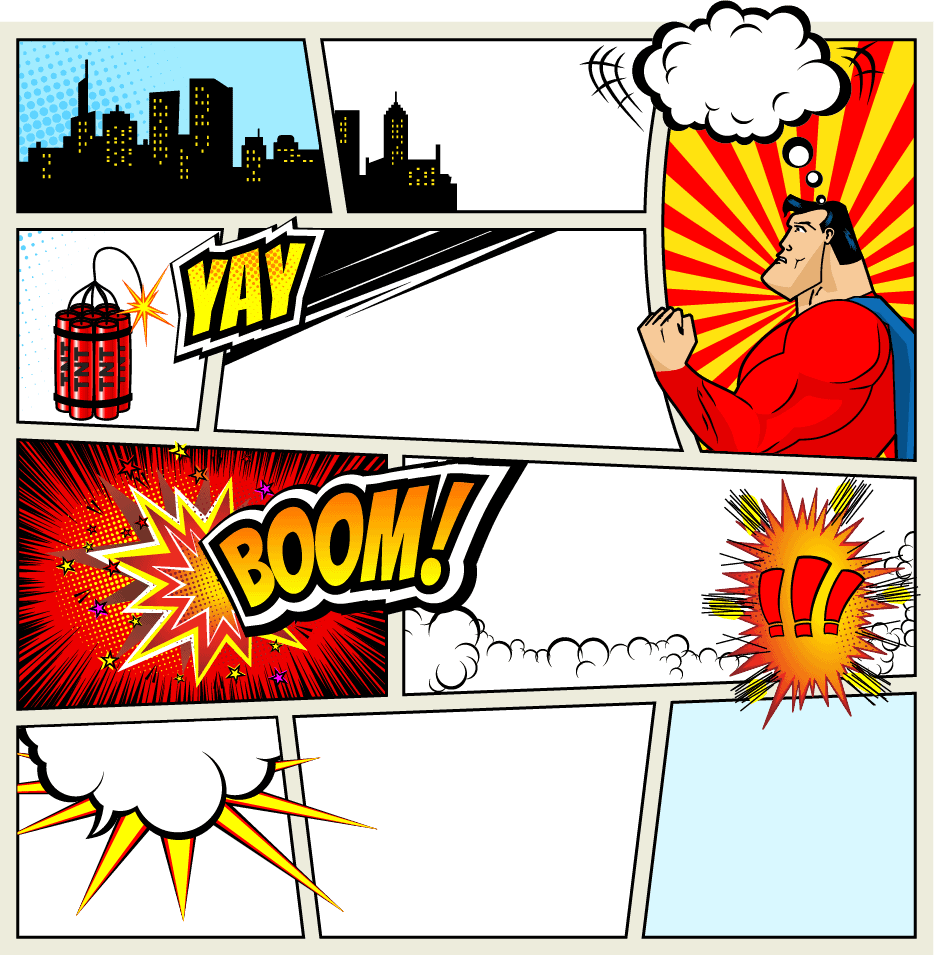
Sentence Stems and Frames
Sentence stems and sentence frames are different. Frames are kind of like fill-in-the-blanks and are a lot easier for students to complete. Sentence stems are more like open-ended sentences and are more challenging. Both can be utilized to provide students with a structure they can follow to write a paragraph or essay. You can go one step further and provide an essay frame which includes a couple of the paragraphs they need as well as stems/frames for the paragraphs they need to write. This can help students complete a well-structured essay in much less time in order to help them better understand what you’re looking for. I’ve included a picture below of this type of essay frame from the ESL Curriculum Membership. You can learn more about sentence frames and stems at the link below.
Sentence Stems: Improve English Learners’ Discussion and Writing
Graphic Organizers
Graphic organizers are an incredibly helpful way of getting students to organize information they need to include in their writing. Graphic organizers come in all shapes and sizes but they usually include a number of boxes and prompts for the kind of information needed. After completing the organizer, students can put the information together into a complete piece of writing.
Journaling
Journaling is a fun way to get students writing regularly as well as remove the pressure students often associate with writing. You can leave journal writing open ended or you can give prompts for each journal entry. Over time, students can look back at previous journal entries to see how they’re writing has improved. This helps with confidence and an understanding of growth mindset.
Substitution
Substitution is a little like sentence frames only the blanks are all filled in. Students go through a paragraph or essay and substitute in words, changing the text to make it their own. You can let students change any part of the text they’d like but it is usually helpful to underline a number of key areas where you definitely want them to substitute in their own words. This can be an extremely humorous activity as well if you let students be goofy with the words they substitute into the text. This makes it a little like Mad Libs and it can be a great way to help students understand and remember difficult concepts and vocabulary from a challenging grade-level text. Check out the Mad Libs activity description below for more.
Make Grade-Level Texts Fall-Out-of-Your-Seat Funny and Memorable for ELLs
TPR Speaking Then Writing
This is a simple but powerful strategy for better writing from your students. It’s basically using TPR to speak through an example paragraph or essay you want students to use as a model for their own writing. With the example passage displayed in a way students can see it from around the classroom (projected, smart board, written on whiteboard, etc.), you assign actions for each line of the writing sample, both saying and acting out the lines as you go. You can ask students for ideas on actions for even more involvement and discussion. The second time, you, as the teacher, drop out of the speaking part to let the students do the speaking though you continue to do the actions along with them. This time, you want to be sure you go around and listen to students you know tend to avoid speaking and make sure they are participating (in an encouraging, goofy way rather than to place any real pressure on them). The third time, you remove the displayed passage to let the students try reciting it without it. If they get stuck, you can do the action for them to jog their memory or show them the passage briefly. Afterward, students attempt to write the passage out with full liberty to change the passage however they see fit.
Think Pair Share Write
Think Pair Share is widely used and many teachers have already discovered that letting students write out their thoughts afterward is an extremely helpful extension to the activity. This back-pocket activity can be used with just about any topic. In response to a question, a reading passage, a concept, or a problem, students are given a moment to consider their response and then get together with a partner or small group (I’d recommend never going over 3 to a group) to share their thoughts. Afterward, they can write their thoughts. A simple twist if students are not coming up with much to discuss in small groups is to let them write out their thoughts first before getting together to share.
Roving Paragraphs
This is a wonderful activity from one of my favorite people of all time Carol Salva. Students complete sentences using sentence stems you have provided them. They then “rove” around the classroom to find a partner. Once they partner up, they read their sentences to each other. You then give them the next sentence stem and repeat the process until each student has completed a paragraph on the target concept. You can read more about this activity below.
ESL Writing Activity – Roving Paragraphs
Make Me Laugh or Pee My Pants
OK, I know not every teacher will go for the title. You can call it whatever you want. The idea is basically a fun story-writing challenge where students attempt to make you laugh with a funny story or scare you with a scary story. The best stories get read out loud for the class. For whatever reason, when I tell my students that I want them to make me laugh out loud or pee my pants, they take to the challenge with unusual rigor. I usually get stories that are far more detailed and creative than normal. This can be extended to essays or more academic writing by letting students alter an essay they’ve written or read or make their funny or scary story take place within the context of the academic topic being taught. When I read the stories out loud, I make a big deal out of the reveal of the winners, getting everyone to applause, and then I read their story out loud. Having read through the stories a couple of times to make sure I can read them well and smooth over any major grammatical issues on the fly, I do dramatic readings, turning the lights off for the scary stories. It’s a ton of fun and the students who win tend to glow with pride. One major benefit of this activity is that it often lets students who are shyer or less academically inclined shine. It’s a huge confidence boost and they usually work much harder for a while at all their tasks.

Well, what do you think? Have you done any of these activities before? Have you got any other recommended ideas for writing with ELLs? Leave me a note below! You can also check out Valentina Gonzalez‘s book on Reading and Writing for English Learners. (Hint: Anything by Valentina is worth paying attention to.)
